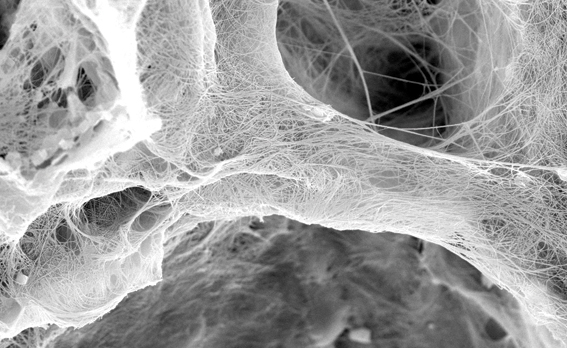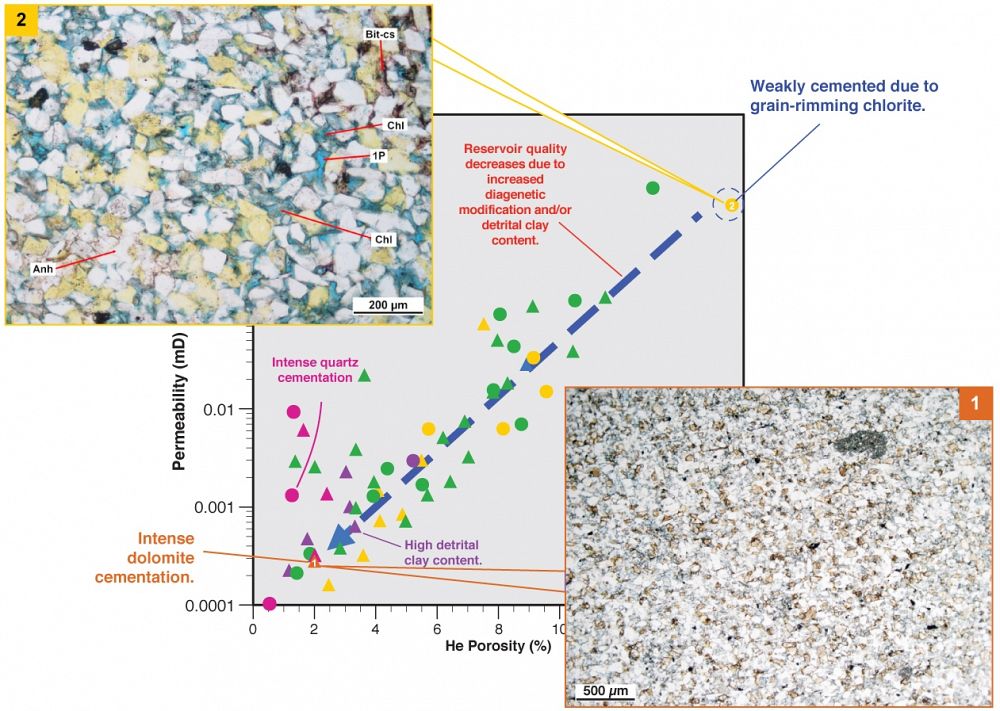All descriptive rock observations, summary modal and textural data, XRD results and any associated sample-based data, such as poroperm, MICP, high-resolution sample scans, thin-section, as well as relevant SEM photomicrographs, are integrated in a searchable database.
- The searchable petrological database (Access) either forms a direct deliverable, for client in-house use, or is used to produce high quality, integrated sample description hardcopy outputs, forming a powerful one-stop source of pore-scale reservoir quality information.
- The geological controls on relative rock quality (eg. texture, detrital composition, compaction, authigenic mineralogy etc.) are determined from the interrogation of petrological results and conventional core analysis data (porosity and permeability), coded by sedimentological descriptors and interpretations.
- Variations in the reservoir quality attributes, in both the stratigraphic and lateral sense and in poroperm cross-plots, are investigated. Rock quality mapping/rock typing is routinely undertaken if considered appropriate, and factors of potential interest for the prediction of formation damage are highlighted in the integrated report.
- Technical Assurance of all petrographical/reservoir quality data and interpretations, assessed via a rigorous quality management system.


